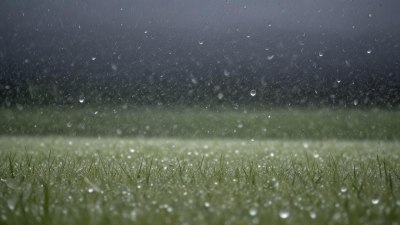Why Some Temperatures Are Just Inherently Untrustworthy
Explore why certain temperature readings can be misleading and the factors that contribute to their inaccuracy.

Temperature is a fundamental measurement that influences the design of our environments, the scheduling of our activities, and even the functioning of our bodies. We rely on it to prepare for the weather, cook food safely, and determine appropriate clothing. Yet, there are times when we are faced with temperature readings that seem dubious, raising the question: why are some temperatures just inherently untrustworthy?
The Basics of Temperature Measurement
To understand the concept of trustworthiness in temperature, we first need to grasp how temperature is measured. In essence, temperature is a measure of thermal energy within a substance, which can directly influence its states of matter. The most common scales for measuring temperature include Celsius, Fahrenheit, and Kelvin. Each scale has specific methods for measuring temperature, typically utilizing thermocouples, thermistors, or infrared sensors. However, the accuracy of these measurements can be influenced by various factors, which we will discuss in this article.
1. Calibration Issues
One of the primary reasons temperature readings can be unreliable is calibration. Instrument calibration refers to the process of configuring an instrument to provide a result for a sample within an acceptable range. If a thermometer isn’t properly calibrated, it may provide inaccurate readings. This can occur because of wear and tear, environmental factors, or manufacturing defects. For example, a mercury thermometer may be affected by changes in atmospheric pressure over time, making it necessary to regularly calibrate the device to maintain accuracy.
2. Environmental Influences
Temperature measurements can be significantly affected by the environment in which the readings are taken. For instance, proximity to heat sources, air circulation, or even direct sunlight can skew temperature readings. Imagine a temperature sensor placed too close to a heater; it could show an inflated reading because of the localized heat. Similarly, readings taken in still air without proper exposure can also fail to represent the true ambient temperature. The ideal conditions for accurate temperature measurement include shaded areas for outside readings and sufficient ventilation for indoor sensors.
3. Time Delay and Response Time
Another untrustworthy factor in temperature readings relates to the response time of the measuring device. Different types of temperature sensors have varying response times based on their construction. For instance, a bimetallic thermometer might take longer to reflect a change in temperature compared to a digital thermometer. If temperature readings are taken while there's a rapid change in the environment—like an air conditioner being turned on—those readings may not represent the real-time temperature accurately. Hence, time delays can cause discrepancies and lead to mistrust in the accuracy of the recorded temperatures.
4. Measurement Techniques
The techniques used for measuring temperature can further complicate the trustworthiness of readings. For example, when using infrared thermometers, the emissivity of the target surface must be considered. Emissivity refers to the efficiency with which a surface emits thermal radiation, and if an object has low emissivity, it may yield incorrect readings. Additionally, variations in measurement techniques—from handheld digital thermometers to contact probes—can lead to inconsistencies, especially when comparing readings from different devices.
5. Human Error
Human involvement in the process of temperature measurement can also contribute to inaccuracies. For instance, if a person misreads a thermometer, accidentally inputs incorrect settings on a digital device, or fails to allow for proper stabilization time, the temperature reading may be flawed. Despite advances in technology, human error remains a contributing factor to unreliable temperature data and needs to be acknowledged.
6. Instrument Drift
Over time, temperature measuring devices can experience changes in performance due to aging or environmental wear, a phenomenon known as instrument drift. This gradual change can lead to systematic bias in temperature readings. Regular maintenance and recalibration are crucial to identifying and mitigating these inaccuracies. For example, a laboratory might regularly replace or recalibrate temperature sensors to ensure that research data remains accurate, highlighting the importance of diligent monitoring and upkeep.
7. Chemical Interference
In specific applications like thermochemistry or when dealing with reactions involving temperature changes, chemical interference can become an issue. For instance, exothermic or endothermic reactions can affect the local temperature in ways that would be misrepresented if a singular measurement is taken without considering the reaction itself. In such cases, patience and precision are required to mitigate the influence of these chemical processes on the perceived temperature.
8. Lack of Standardization
A further complexity arises from the lack of standardization in temperature measurements across different scientific fields or geographic regions. For example, various industries may prefer specific types of thermometers or measurement protocols that may not be directly comparable. A temperature reading taken in one laboratory using a specific technique might provide different results when compared to another laboratory that utilizes a different technique. This lack of uniformity can cultivate confusion regarding the reliability of temperature data.
9. Localized Phenomena
Additionally, localized temperature phenomena can skew data. Microclimates, or specific areas where climate conditions differ from surrounding areas, can yield temperature readings that do not accurately represent broader trends. For example, urban heat islands can cause city temperatures to be significantly higher than those in surrounding rural areas. This discrepancy is crucial to understand when interpreting temperature data at different scales, particularly for climate-related studies.
10. Technology Limitations
While advancements in temperature sensing technology have greatly improved accuracy, there are still limitations inherent to the technology itself. For instance, sensor sensitivity can diminish over time, and there are constraints regarding the temperature ranges that specific sensors can accurately measure. Additionally, some devices may require particular conditions, such as low humidity, to produce accurate readings, which can further complicate their reliability when used in less-than-ideal situations.
In light of these factors, it’s imperative to recognize that while temperature is an essential metric in science and everyday life, not every temperature reading should be taken at face value. Calibrations, environmental influences, and human errors all play significant roles in the accuracy of temperature measurements. By understanding these complexities, we can improve the reliability of temperature data and foster informed decision-making in both scientific contexts and daily situations. A careful approach to temperature measurement can ensure that we maintain a more accurate perception of the world around us, helping us react appropriately to changing conditions.











